January-February, 2012
Note: There are lots of photos in this report .
This year three new revegetation sites have been created and are ready to plant with trees raised at the greenhouse. Trails were cleared with machetes and holes dug in anticipation of the rainy season which began, as it typically does, right around the beginning of January. Once the rains moistened up the soil, trees were delivered to the various sites and we started planting. One site (with 274 trees) is in the El Toro watershed, a large area with severe erosion problems.


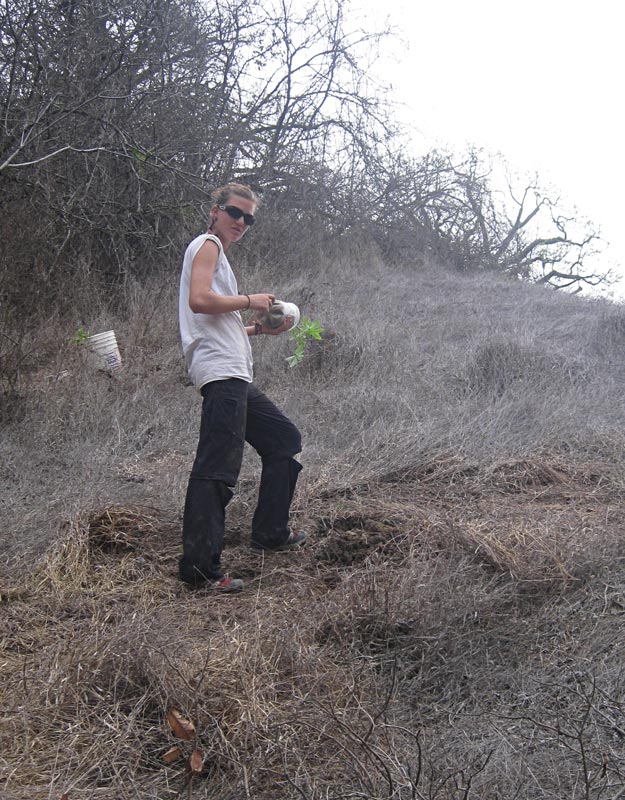

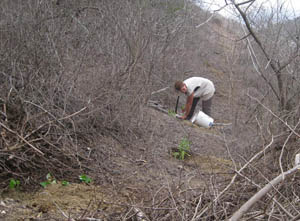
Another site for this year is a continuation of the site from 2011 at a property owned by Dr. Parra. He has chicken coops for egg production in the flat areas of his land, but is concerned about the lack of vegetation on the hillsides and wants to plant trees there in order to prevent mudslides. This year we continue to cover the hills on his land with 260 more native trees.
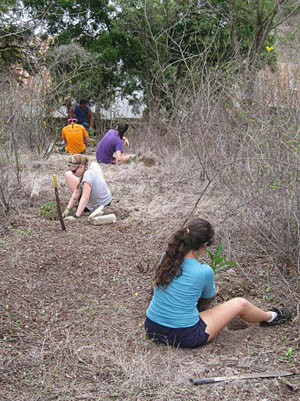

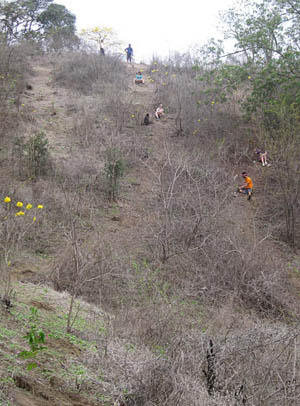
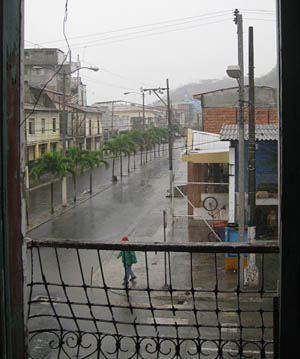

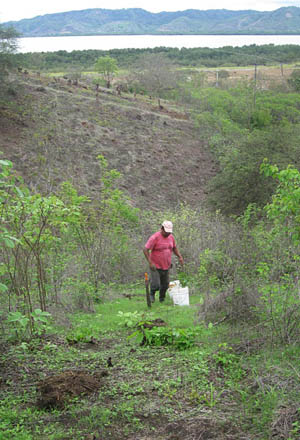
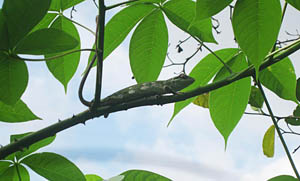
The third revegetation site for 2012 is at ‘El Bosque en Medio de las Ruinas’ (‘The Forest amidst the Ruins’) an inner city green area/park where Planet Drum has been planting trees for 10 years. This site, with 260 trees, is located in a section of the park that is still mostly devoid of large vegetation. Preparation for this site was started several months ago when we made trails and dug holes. Since then, some of the holes filled up with soil, so we spent a morning cleaning up the site again before delivering trees.
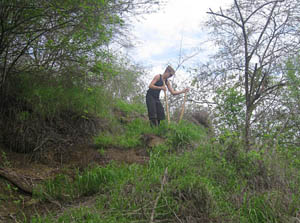



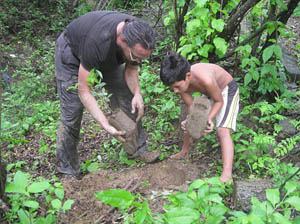
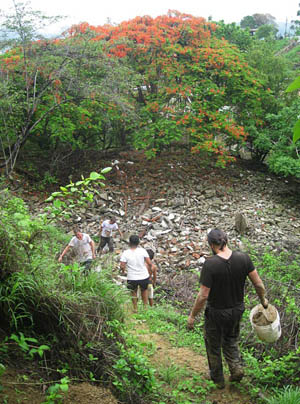


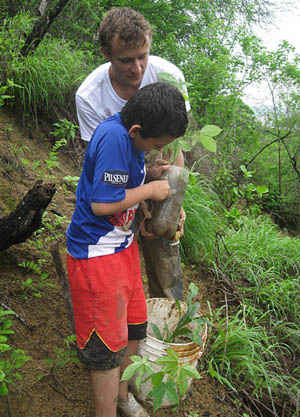
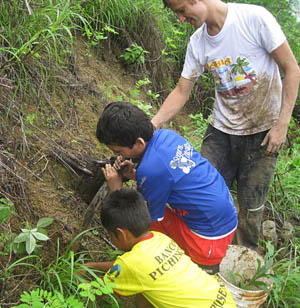


More tree planting.
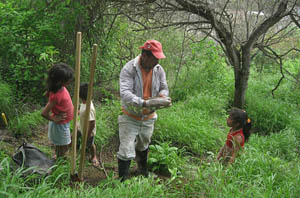
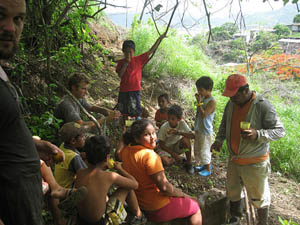
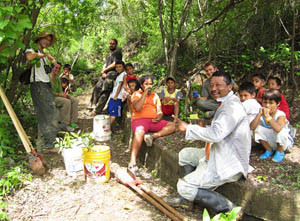
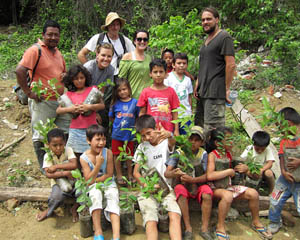

Trees that are planted at our revegetation sites, as opposed to those given away, are marked with bamboo stakes so that we can locate and identify them, for example when we water them during the dry season.
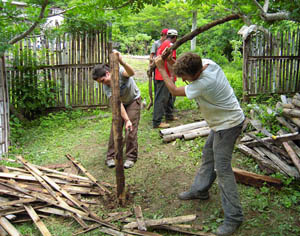
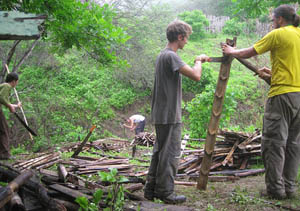
Long time friends and Planet Drum collaborators Jaeson and Gina Schultz organized a trip for James Haim of Cob Together, based out of Oregon, to visit Bahia and experiment with Cob construction in South America. They built a bench at their house in Bahia and an outdoor oven for the Bellavista community. Of course, Planet Drum got involved to learn about cob construction and help in the labor intensive work.

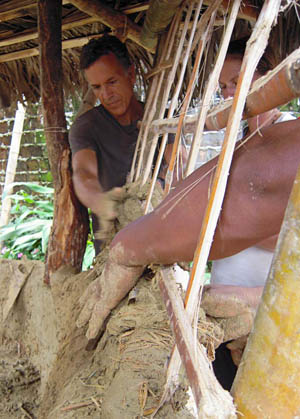

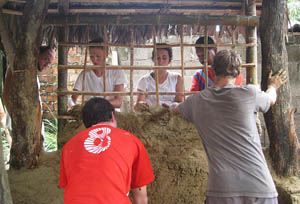




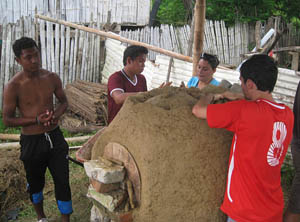
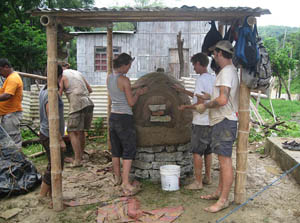



The 13th Anniversary Celebration of Bahia being declared an Eco-city was unfortunately, yet not surprisingly, small. Lack of support and organization on the part of the local government in recent times has given a feeling of emptiness to the Eco-city movement. The only visible signs of Eco-city activity are from individual organizations that do ecological work, such as Planet Drum and Cerro Seco nature reserve; the triciclos (eco-taxis) which are independently organized; and the half-hearted city effort to resuscitate the garbage separation program, which is currently underway. The Eco-city is suffering from a lack of initiative from local authorities, and Planet Drum is currently evaluating plans to inject some renewed spirit in the Eco-city movement through new urban-based bioregional projects.
Despite all of this, Planet Drum showed up at the Anniversary Celebration with two truckloads of trees to give away. We also hung banners and signs and had a strong group of volunteers. Pedestrians passing by the municipal building flocked to our stand to receive a free tree. Fruit trees have been by far the most popular. We have large quantities (six hundred to fifteen hundred) of three varieties of native fruit producing trees: Chirimoya, Pechiche, and Guayaba.
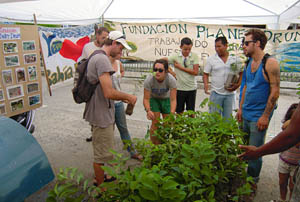
This past year we produced more trees at the greenhouse than ever before, over 5,000. However, due to a variety of factors, including low volunteer participation in October and November, we only were able to prepare sites for a small fraction of those trees. As a result, we needed to find new ways to distribute the remaining trees to more people and communities. Typically most of the trees at the greenhouse are reserved for the revegetation sites that we create.
I called up Ivan Aguirre, a good friend of Planet Drum, nature lover and one of the few level-headed politicians around. He agreed to help us deliver trees in his truck to communities beyond Bahia and Kilometer 8, all the way to Kilometer 20. In the past, Planet Drum has only worked with one of the numerous communities in the area to Kilometer 8. This year, with the help of Ivan, we have been able to give away trees in six different communities, including two repeat trips to communities that requested large numbers of trees. Residents were eager to receive them and promised to take care of the trees they were given. On the last trip we made, as we were arriving, three children walking down the road recognized us from a distance and held up their hands, signaling that they each wanted a tree. We stopped and handed them three trees to take to their houses.
Aside from the obvious need for restoring native vegetation in the area (there has been massive devegetation), there is clearly a large demand among the population for tree planting in the areas surrounding Bahia to Kilometer 8. Hopefully we will be able to continue and expand revegetation efforts in these new regions.
Talking with community members has also been helpful in identifying trees that are the most desired by the people. Among the most popular trees that were requested, that we didn’t have this year are: Mango, Limon, Guayacan, Cedro, and Balsamo. We will try our best to augment production of these species in the future.
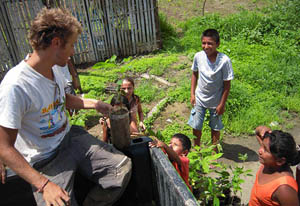
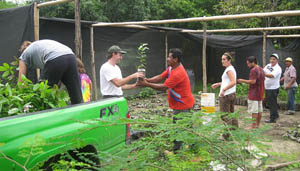


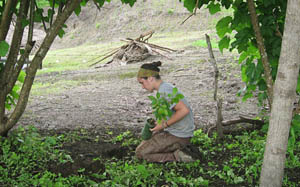


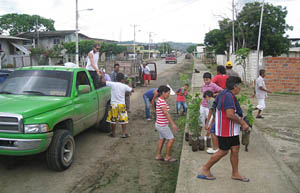
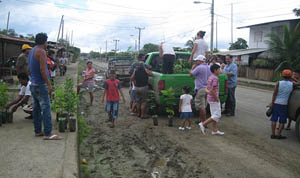
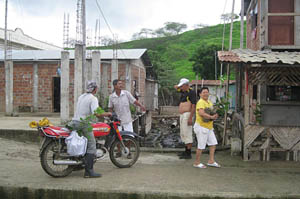


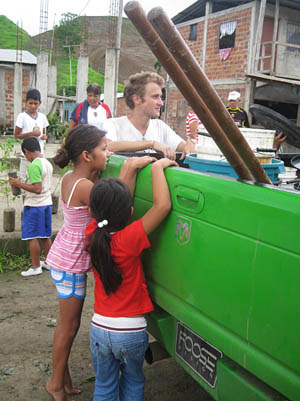
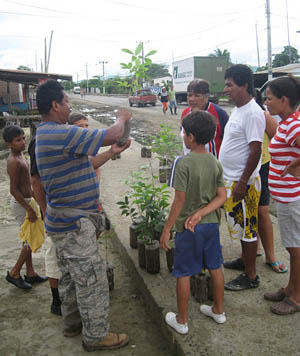
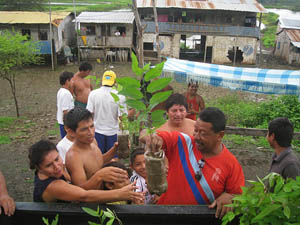

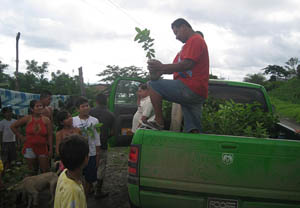
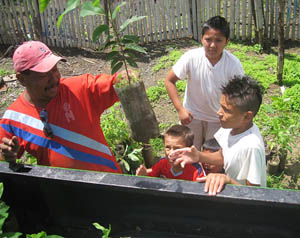
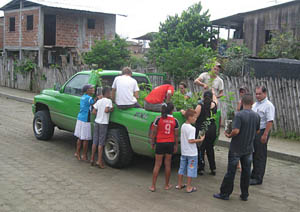
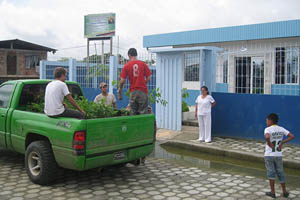



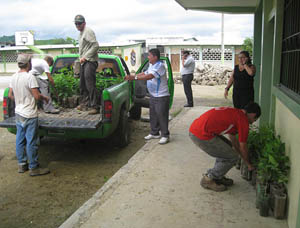
Meanwhile, it became apparent that this is an especially wet rainy season. It has been raining multiple times per week since early January, mostly at night, but occasionally during the day as well. Sometimes, the rain comes down quite hard.
As of March, local residents are calling this the wettest rainy season since the El Niño year in 1998. Several towns inland from Bahia are completely flooded, and thousands of farms have lost their crops due to floods. In areas that aren’t susceptible to flooding, the rains have resulted in incredible plant growth, including crops, trees, and weeds. At the greenhouse we have led several weeding campaigns inside and outside to prevent the weeds from overgrowing the place.

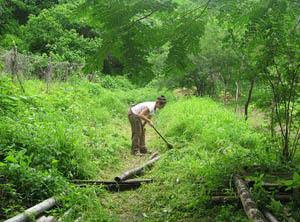
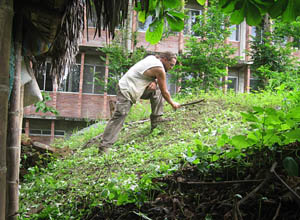

We will continue to work on the revegetation project, as the rainy season progresses. Sites that have been planted will need to be weeded and soon we will begin to produce new trees for next year.
If you are interested in volunteering, please see http://planetdrum.org/volunteerbahia.htm on this website and get in touch at planetdrumecuador@yahoo.com , there are still volunteer opportunities available for the summer months and beyond.
Pásalo bien,
Clay

I don’t think the title of your article matches the content lol. Just kidding, mainly because I had some doubts after reading the article.
Can you be more specific about the content of your article? After reading it, I still have some doubts. Hope you can help me. https://accounts.binance.com/en/register?ref=JHQQKNKN
Thanks for sharing. I read many of your blog posts, cool, your blog is very good.